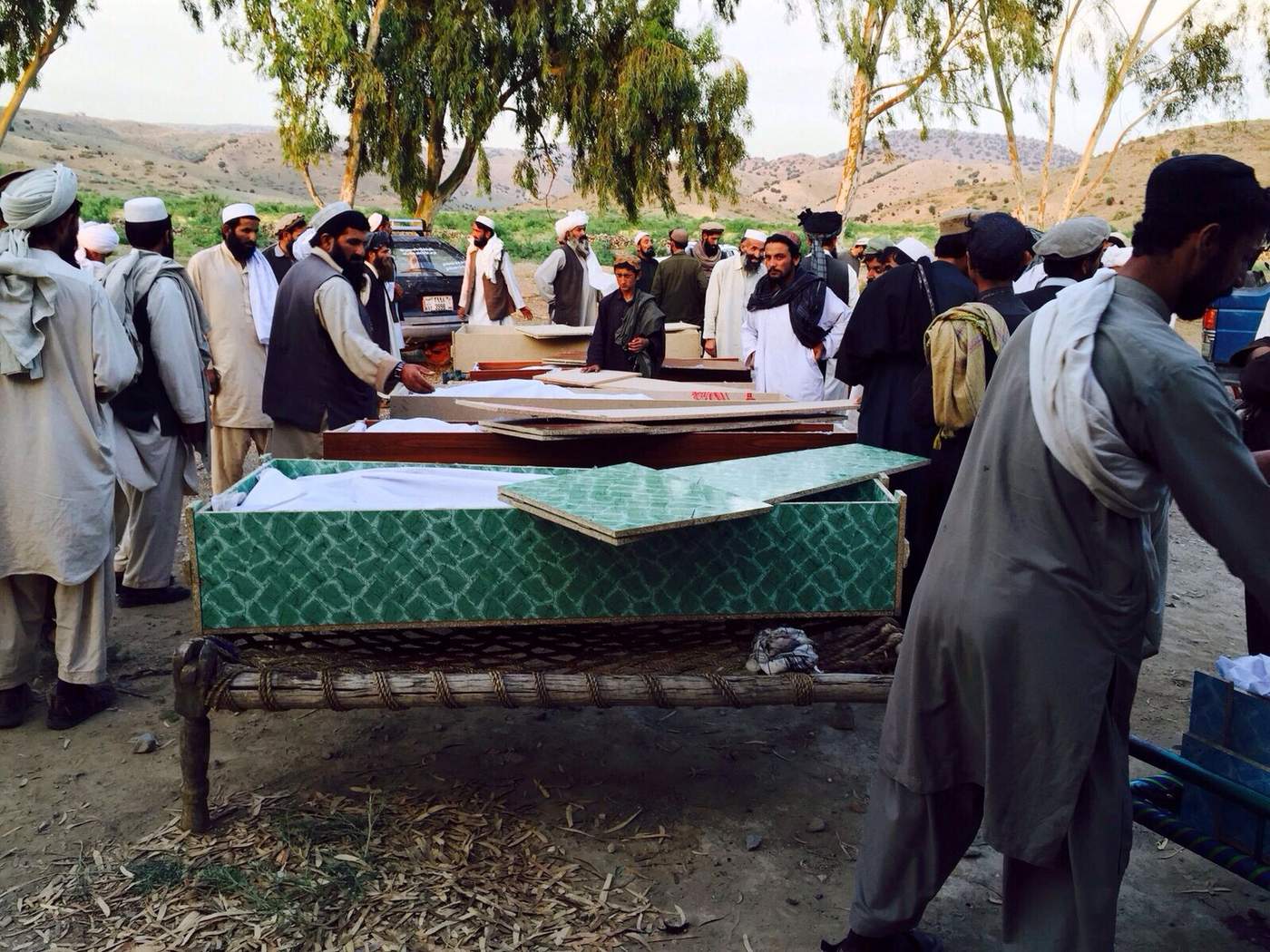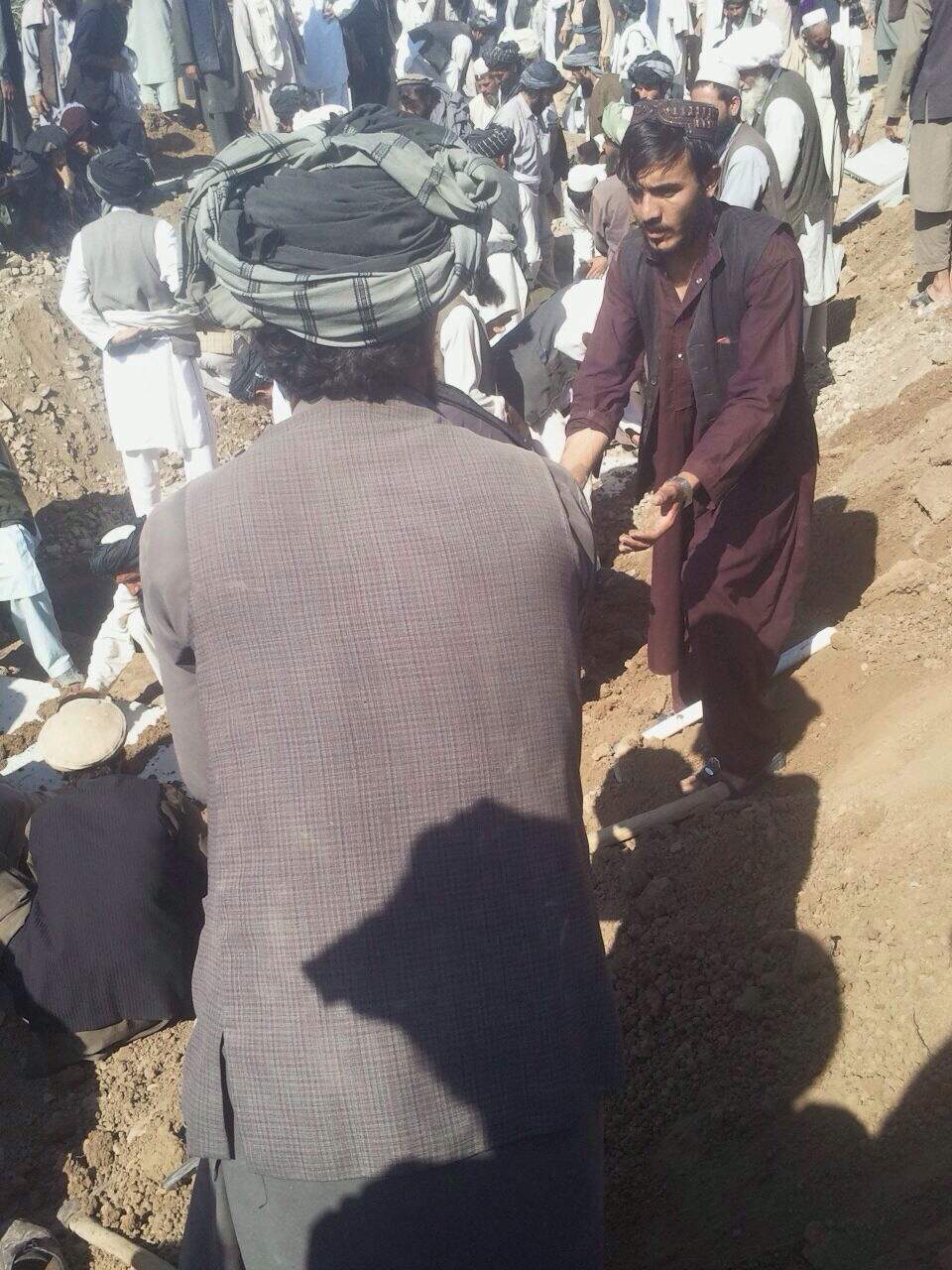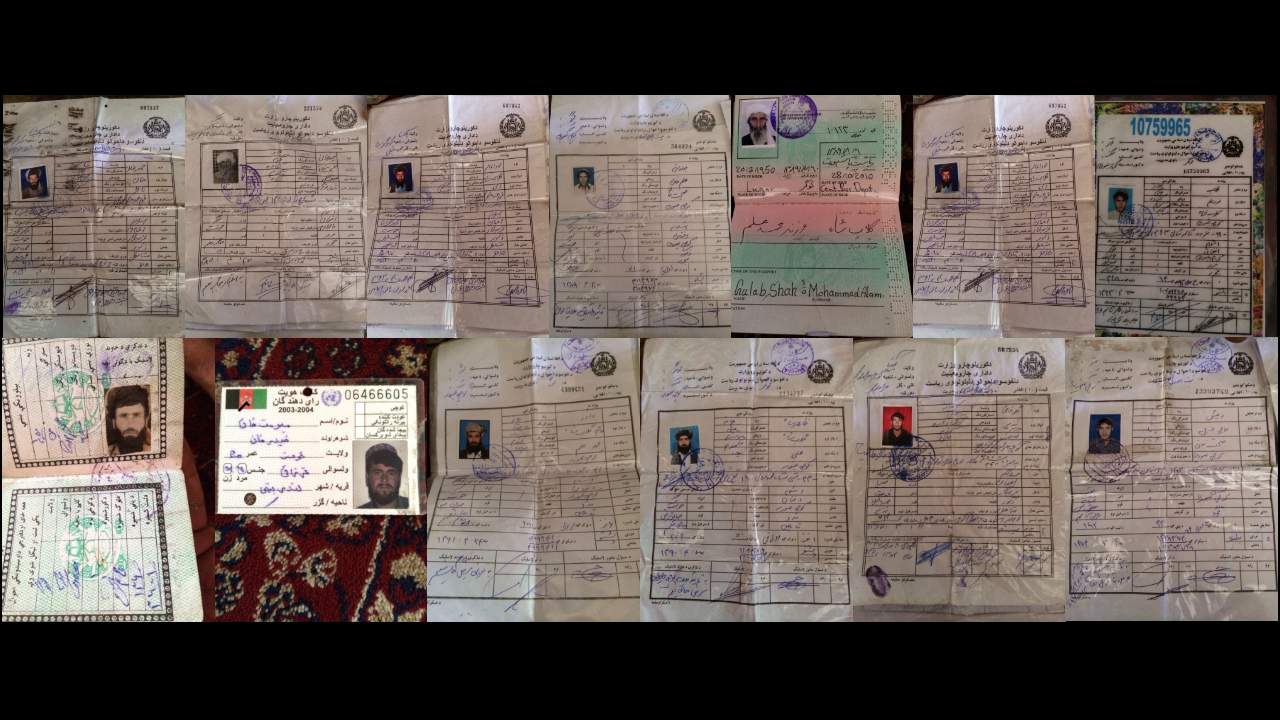This narrative first cropped up in an interview given to Voice of America by Khost’s deputy governor, Abdul Wahid Patan, on the day of the attack.
In that interview Patan said the pickup trucks were part of a funeral procession for Taliban commander Ameen Kochai, who was supposed to have been killed the previous day.
Separately, Pajhwok, an Afghan news agency, reported the next day that another Taliban commander, Bahram Kochai, had been in the funeral procession when it was struck.
But when we spoke to deputy governor Patan several months later, he seemed less sure about what had happened.

Taliban commander Ameen Kochai in Afghan custody (image from NDS video).
He said: “They (the villagers) said someone had died in Pakistan and they brought him here for burial. On the other hand the government sources said it was a Taliban’s funeral, but we could not prove either of these claims.”
He explained that when he spoke to the media on June 5, he had been briefed by the local branch of the National Directorate of Security (NDS). He said the NDS coordinates with the American military base in Bagram.
There is one significant problem with this version of events: Ameen Kochai, the Taliban commander whose funeral it was supposed to be, is still alive.
The Bureau found video of a man identifying himself as Ameen Kochai saying he had been arrested by the NDS. The NDS confirmed they had him in custody.
The idea that a funeral was supposed to take place that day was repeated by a number of sources. However, they were talking about a different funeral entirely.
A third version of events has also been suggested. A well-connected and independent source in Khost province, who asked to remain anonymous because of the sensitivity of the subject matter, said the strike followed an attack on the border police checkpoint.
Taliban commander Bahram Kochai was killed in the strike, the source said, and three of the 14 killed were from Waziristan.
Mohammad Yaqub Mandozai, the provincial police security director, told the Turkish news agency Anadolu on the day of the strike that it hit as Taliban fighters were running away "after fighting between frontier police forces and the insurgents who had crossed the border”.
When we contacted Mandozai several months later to ask what he knew about the checkpoint attack, he said he didn't want to comment because he had been transferred to a new role.
Neither were we unable to confirm that Bahram Kochai had been killed. One villager said he thought he had been arrested in Pakistan. Khost's police chief would not give us any information on him, and the local governor's office didn't even know who he was.
There may have been one witness to the border checkpoint attack – a US drone. Nato told us they were able to disprove the civilian casualty claim by "pre-strike and strike footage". But if drone footage did capture a checkpoint attack, Nato would not say so publicly. When asked whether such an attack had occurred, a Nato spokesman said operational security prevented him from giving any details other than it was a counter-terrorism strike.
All pictures are credited to Gul Marjan Farooqzoi and Meer Zaman unless otherwise stated.
The Bureau is tracking US drone and air strikes in Afghanistan as well as Pakistan, Yemen and Somalia as part of our US drone war project.
This story was produced as part of the Bureau's Naming the Dead project, which is funded by the Joseph Rowntree Charitable Trust.
Follow our reporters Abigail Fielding-Smith and Jack Serle on Twitter.
Or contact them by email on abigailfielding-smith@tbij.com and jackserle@tbij.com.
Sign up for email updates from the Bureau's drone war project.















